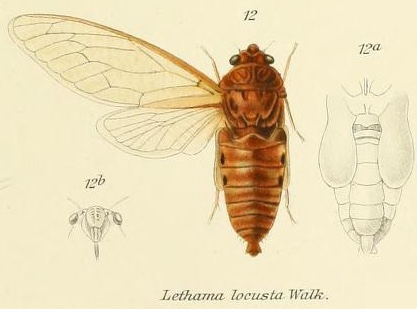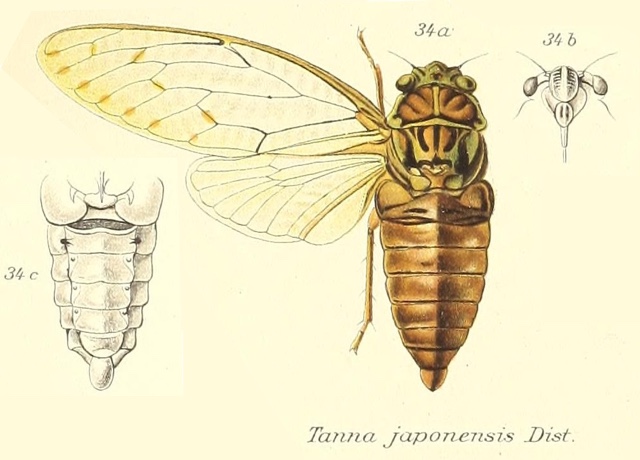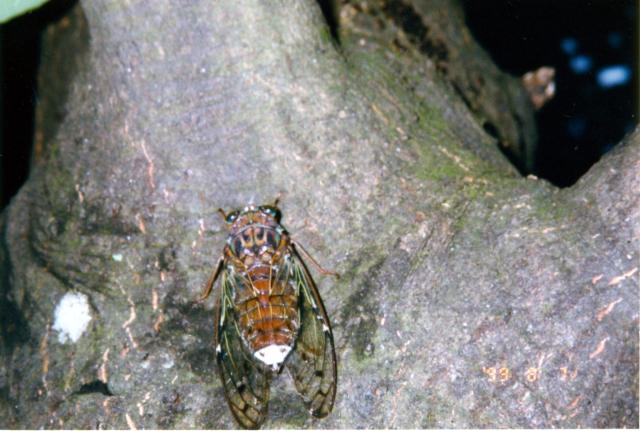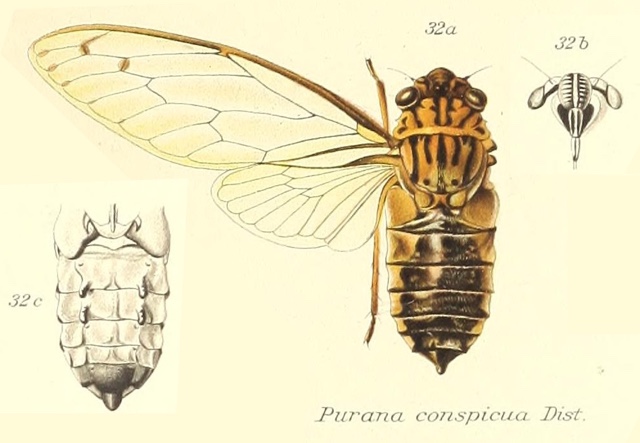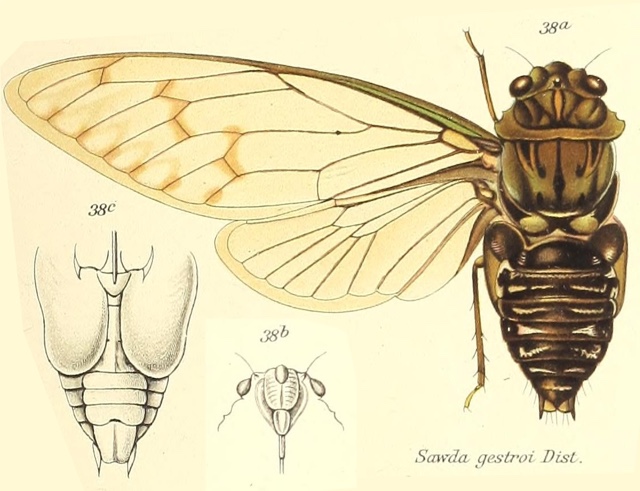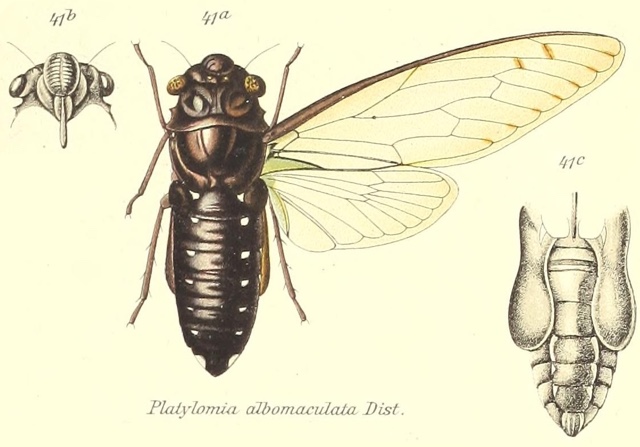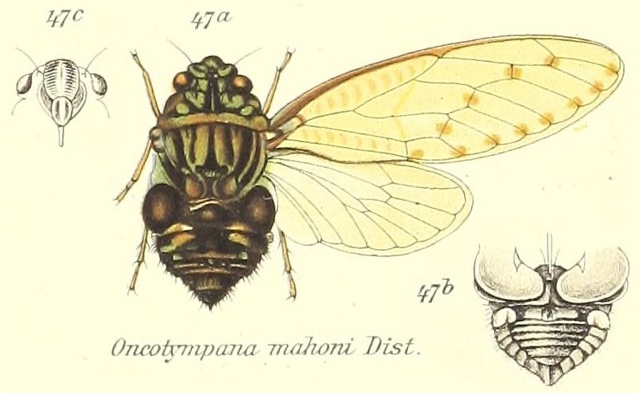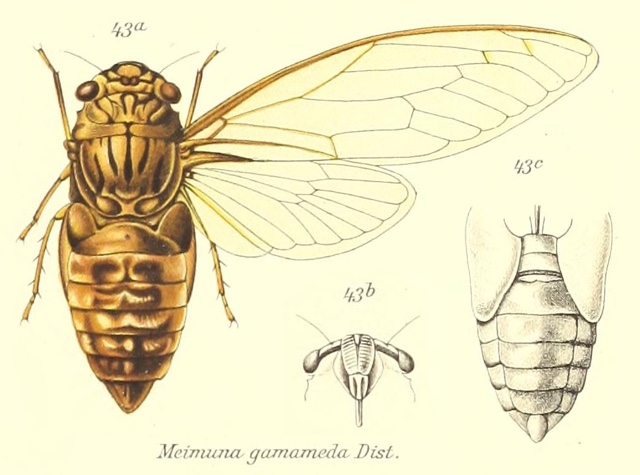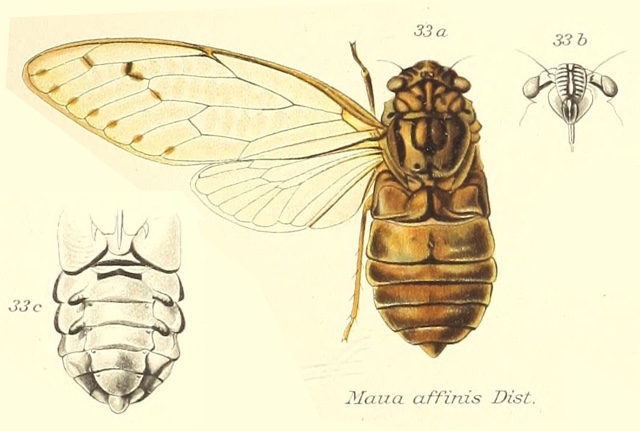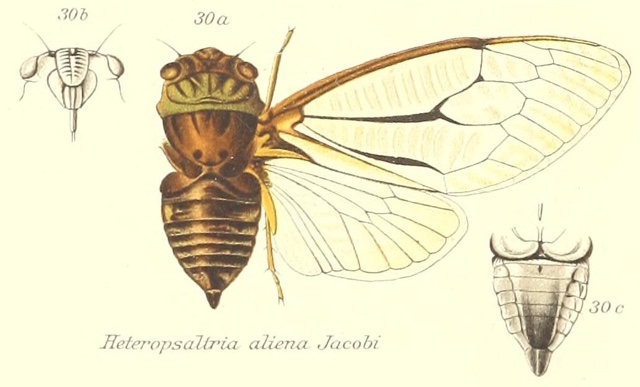Terpnosia psecas (Walker, 1850) is a cicada found in India, Ceylon (Sri Lanka) and Java (Indonesia).
Scientific classification:
Family: Cicadidae
Subfamily: Cicadinae
Tribe: Psithyristriini
SubTribe: Psithyristriina [Psithyr means “whispering” in Greek]
Genus: Terpnosia
Species: Terpnosia psecas (Walker, 1850)
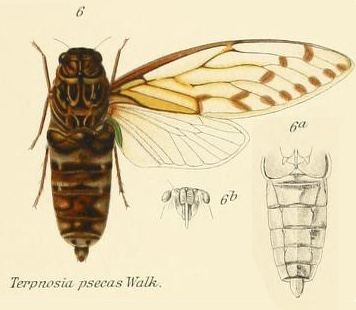
Terpnosia genus description by W. L. Distant:
Characters. — Head about as long as breadth between eyes, deflected anteriorly, front not prominent; pronotum distinctly shorter than mesonotum, its lateral margins sinuate, with the posterior angles moderately lobalety produced; abdomen in male longer than space between apex of head and base of cruciform elevation; tympanal coverings both narrower and shorter than tympanal cavities; opercula in male short and transverse, usually not or scarcely extending beyond base of abdomen; anterior femora spined beneath; tegmina and wings hyaline, the first usually more or less maculate, with eight apical areas, and the basal cell longer than broad; wings with six apical areas.
References:
- The illustration and description comes from the journal Genera Insectorum, and a specific article from 1914 by W. L. Distant titled Homoptera. Fam. Cicadidae, Subfam, Gaeaninae. Read it on the Biodiversity Heritage Library website.
- Species name verification comes from Allen Sanborn’s Catalogue of the Cicadoidea (Hemiptera: Auchenorrhyncha).
